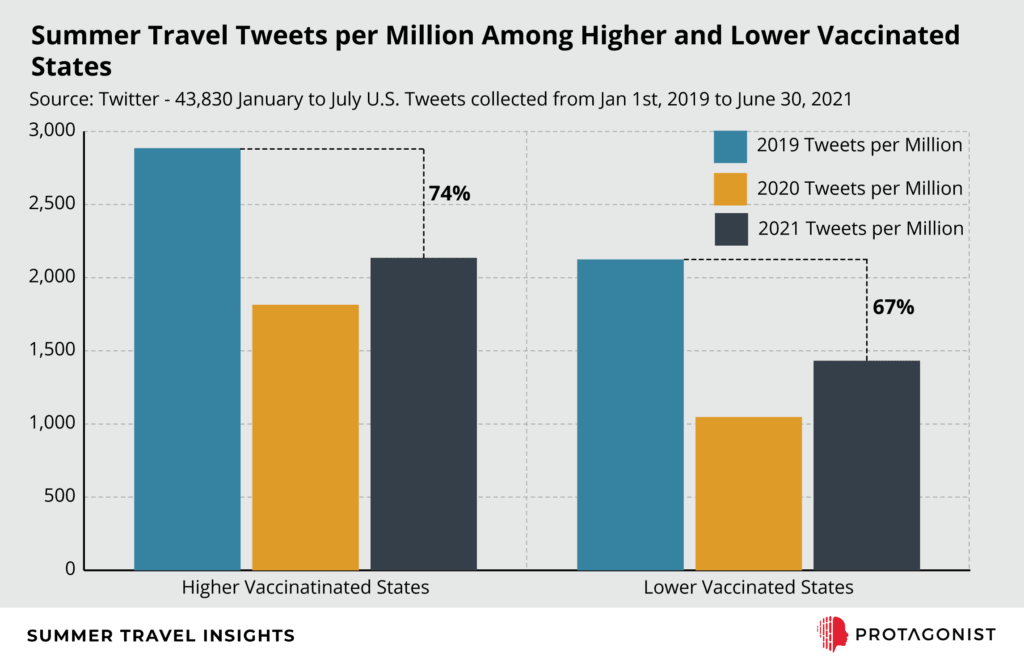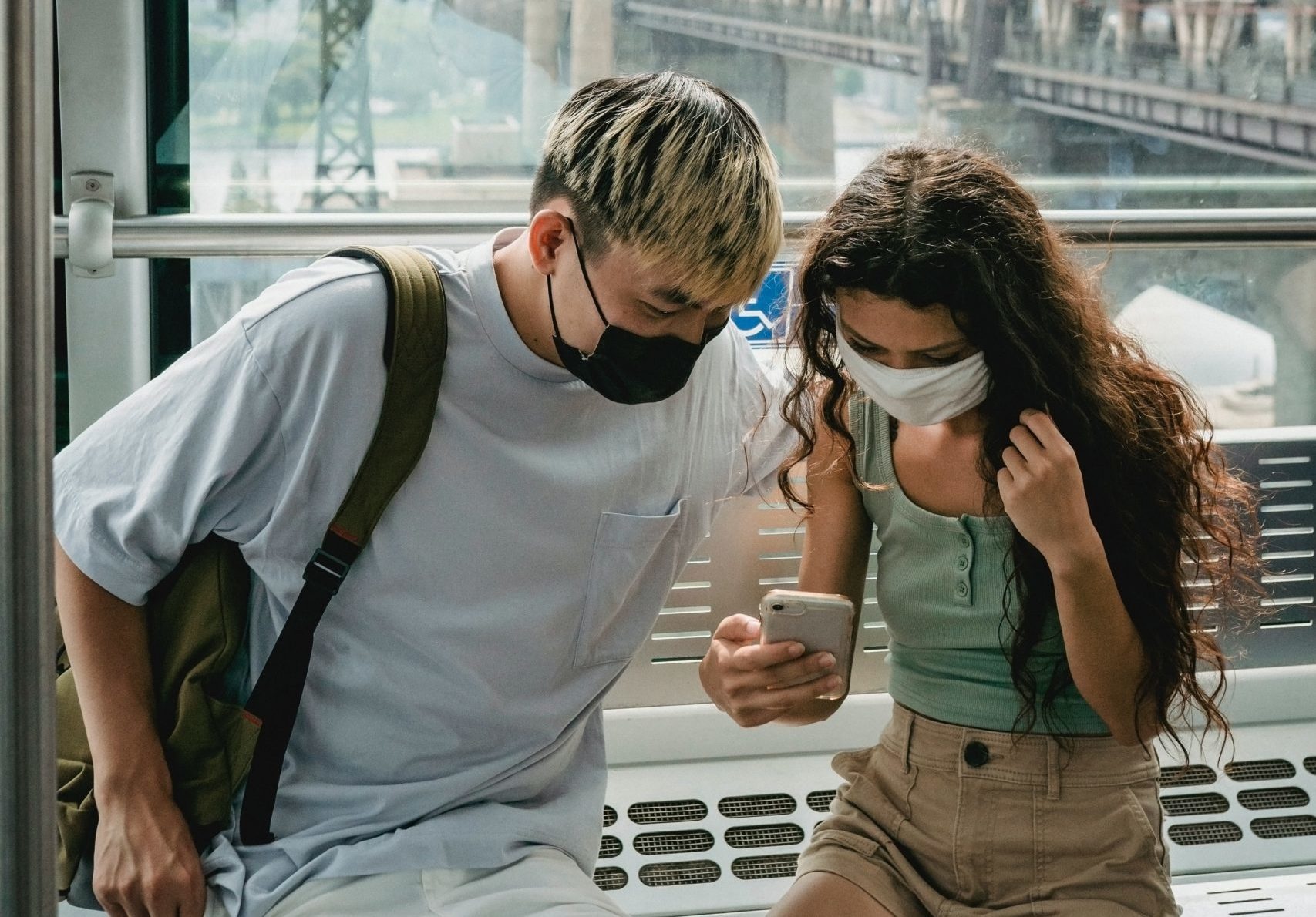With summer fully underway, and many Americans embracing summer activities after the long pandemic, we are looking at how narratives toward summer travel are evolving. In this piece, we explore how those attitudes differ among states with higher and lower vaccination rates.
The three states with the highest current vaccination rates are all in New England (Vermont, Massachusetts and Maine), and the three states with the lowest current vaccination rates are in the South (Alabama, Mississippi and Arkansas).

We were curious to understand how these two cohorts’ attitudes toward summer travel have been affected by the pandemic. Are people in regions with lower vaccination rates simply ignoring the pandemic, foregoing vaccinations, and getting back to normal? Or are these populations not yet returning to pre-pandemic activities?
To answer these questions, we measured the level of conversation about summer travel in each of the states. The following graph shows the number of tweets per million people in each state in 2019 (the normal, baseline year), 2020, and 2021.

As the chart shows, in both regions, tweeting about summer travel decreased significantly from 2019 to 2020 and rebounded somewhat in 2021, as we would expect. However, the more highly vaccinated states have rebounded to 74% of their pre-pandemic levels, while the states with lower vaccination rates have only rebounded to 67% of normal levels.
Discussion of summer travel, then, seems correlated with vaccination rates. A number of hypotheses could explain this correlation. For instance, it may mean, if lower rates of vaccination are driven by negative attitudes towards vaccination (rather than access or other factors), that those people don’t have a general opinion that the pandemic should be ignored, but rather a sincere fear of or skepticism about vaccines. Or it could be that areas with lower vaccination rates have experienced more economic hardship during the pandemic, depriving people of funds for summer travel. Further study is needed to determine if these or other factors are key to explaining the correlation.
To explore further, we took a look at the sentiment and key topics within each cohort’s conversation.

In both populations, the conversation turned more strongly negative in 2020, as would be expected, and then returned almost exactly to pre-pandemic levels in 2021. For those who are discussing summer travel, their sentiment is back to normal. Interestingly, in the Southern states, attitudes toward summer travel are more positive than in New England in all three periods, indicating that summer travel creates particular enjoyment there.
We also took a deeper look into the topics that make up the negative part of the current 2021 sentiment. From that analysis, it is clear that both groups lament how summer travel activities will be curtailed and that trips will be more expensive. There are significant differences, though—the New England group highlights concerns about summer destinations not having enough staff, while the Southern group expresses concerns about the media making people feel bad for taking summer vacations in spite of low vaccination rates.
Some of these observations may align to widespread perceptions of these two groups, and some may not. As with many Narrative Analytics investigations, our conclusion is that peoples’ attitudes and beliefs are often more complex and nuanced than might be expected. Often the most valuable thing companies, foundations and government agencies can do is understand that complexity and nuance, so that they can more deeply understand the people they serve.


